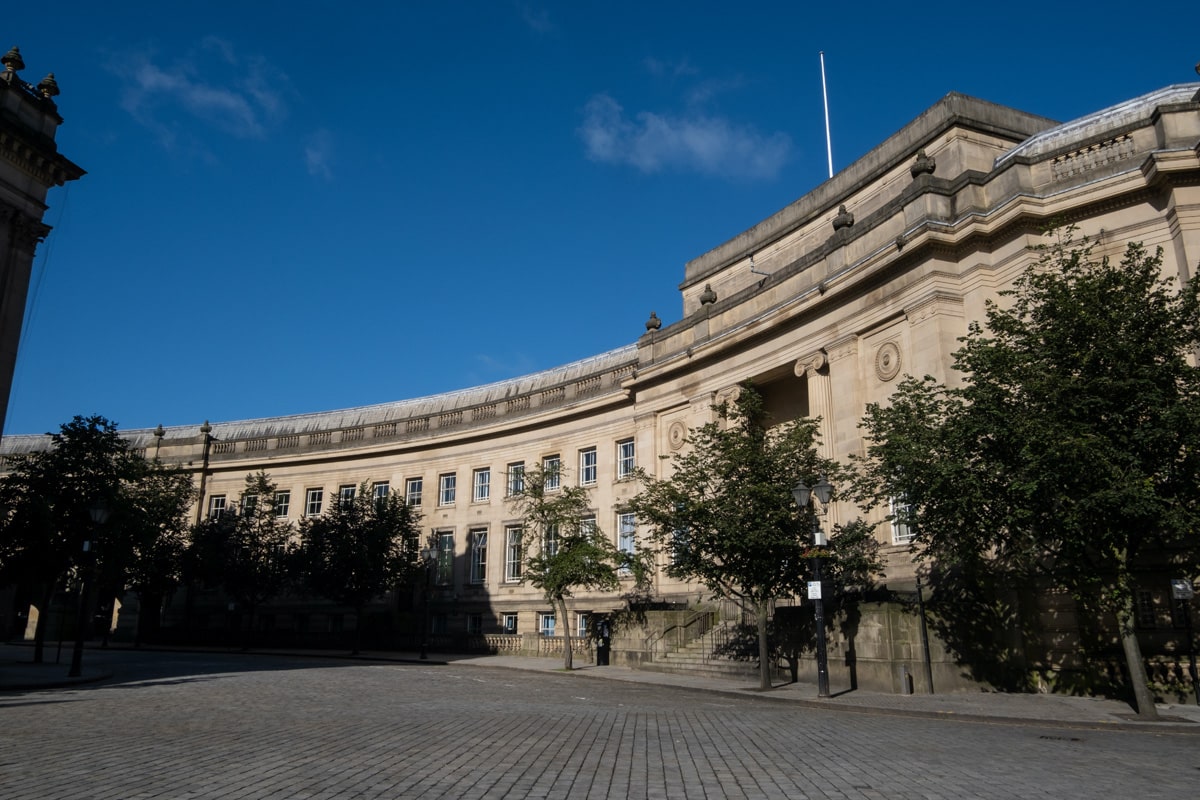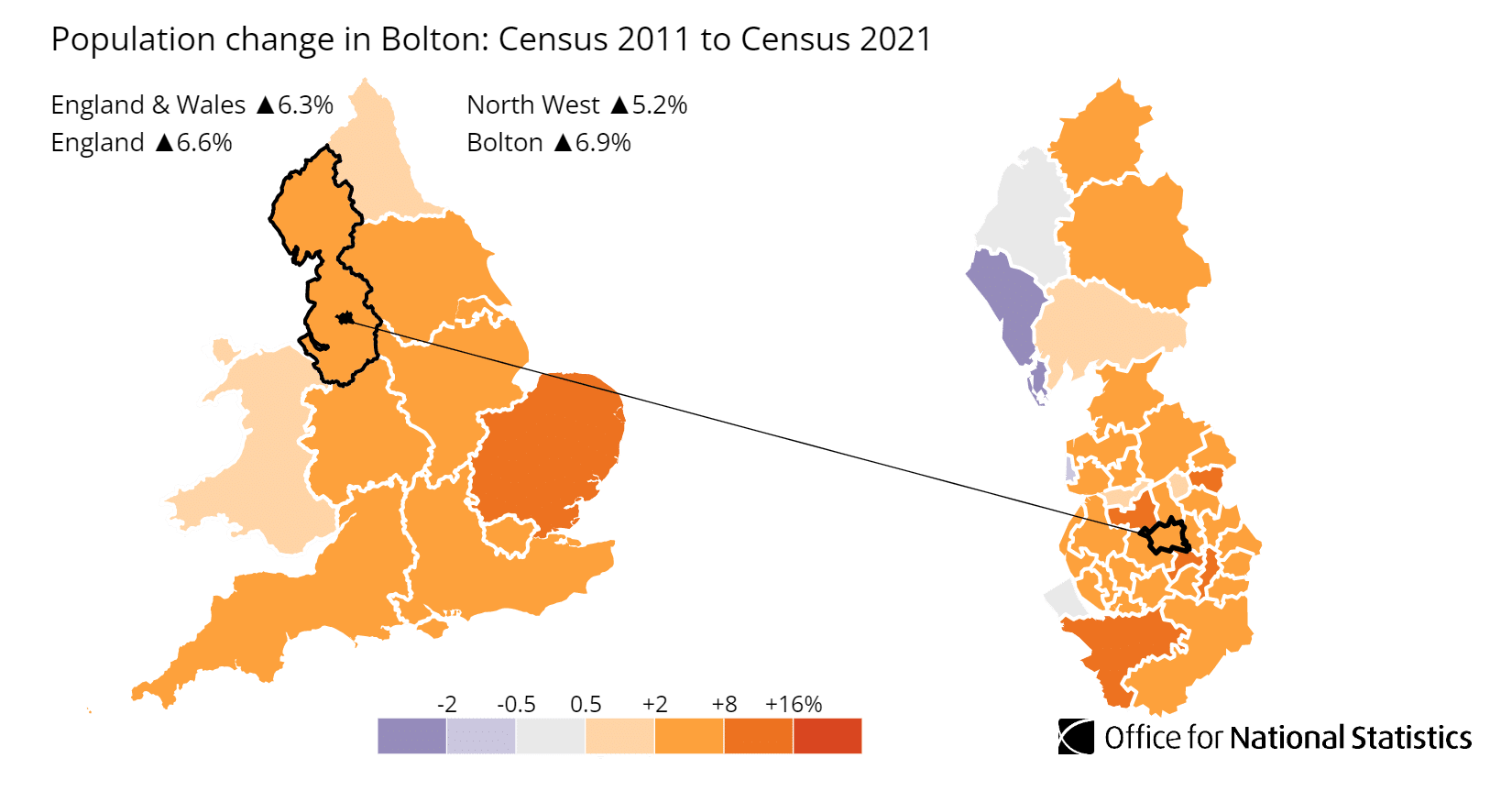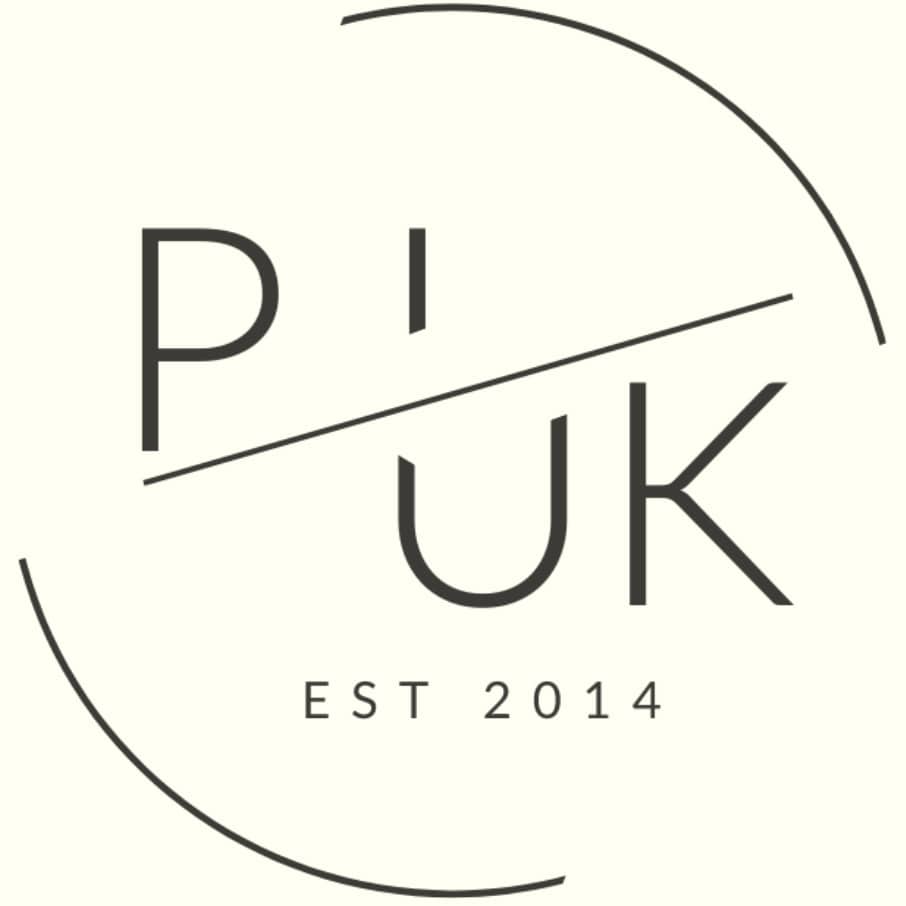Bolton Property Investment: Best Buy-to-Let Areas 2025
Bolton combines its rich industrial heritage with a modern, growing economy, offering property investors the advantages of Manchester's economic growth at significantly lower entry prices. The town's strategic location and ongoing regeneration make it particularly attractive for those seeking value in Greater Manchester's expanding property market.
Data updated: February 2025. Next update: April 2025
Bolton Buy-to-Let Market Overview 2025
Average yields range from 3.9% to 5.7%, with property prices spanning £192,327 to £324,464 (31% below UK average). Top performing areas include Farnworth (BL4) for yields (5.7%) and Bromley Cross (BL7) for capital growth. With average weekly rents between £211-£261, equivalent to monthly rents of £913-£1,132.
Contents
- Best areas for buy-to-let in Bolton
- Why invest in Bolton?
- When was the last house price crash in Bolton
- Average sold house prices in Bolton by property types
- House prices in Bolton: For sale asking prices (£)
- Price per square foot in Bolton (£)
- House price growth in Bolton (%)
- Rental prices in Bolton (£)
- Gross rental yields in Bolton (%)
- Is Bolton rent high?
- Are Bolton house prices high?
- How much deposit to buy a house in Bolton?
- Bolton population growth
- Bolton landlord licensing
- How to invest in buy-to-let in Bolton

-
by Robert Jones, Founder of Property Investments UK
With two decades in UK property, Rob has been investing in buy-to-let since 2005, and uses property data to develop tools for property market analysis.

Property Data Sources
Our location guide relies on diverse, authoritative datasets including:
- HM Land Registry UK House Price Index
- Ministry of Housing, Communities and Local Government
- Ordnance Survey Data Hub
- Propertydata.co.uk
We update our property data quarterly to ensure accuracy. Last update: February 2025. Next update: April 2025. All data is presented as provided by our sources without adjustments or amendments.
Best Areas for Buy-to-Let in Bolton
Highlights
Bolton, strategically located in Greater Manchester, offers affordable buy-to-let's, and is a great entry price for homeowners and investors.
Average house prices £
- Premium areas: BL7 (Bromley Cross) leads at £324,464, with BL6 (Horwich) at £299,434
- Value opportunity: BL4 (Farnworth) at £192,327 represents the most accessible entry point
Average rents and yields
- Highest weekly rent: BL5 (Westhoughton) achieves £261, delivering a 4.60% yield
- Top yield area: BL4 (Farnworth) leads with 5.70% yield
- Premium yield: BL7 (Bromley Cross) offers 3.90% due to higher purchase prices
Bolton's property market significantly benefits from Manchester's extensive road and motorway network, yet unfortunately it doesn't have the same benefit with the Metrolink that nearby Salford has, which in part has limited its growth in recent years.
What it misses in historic growth compared to its neighbouring cities and towns, it more than makes up for in affordability.
Farnworth (BL4) emerges as a standout opportunity, combining the highest yields (5.70%) with the lowest entry prices (£192,327). Premium areas like Bromley Cross (BL7) and Horwich (BL6) attract families and professionals.
Why Invest in Bolton?
Bolton is one of the boroughs which makes up Greater Manchester and although it was traditionally a cotton manufacturing town, today, Bolton’s key sector strengths according to Invest in Bolton include manufacturing and logistics, professional services, creative and digital industries, retail and leisure, construction, science and R&D and green technology.
Bolton is home to a number of business parks that provide many jobs. Logistics North is said to be the biggest development of its kind in the north of England. Logistics North provides a distribution hub for major international names including Komatsu, MBDA UK, Aldi, Lidl, Amazon and Whistl. Logistics North has 3 million sq. ft. of grade A logistics and manufacturing space now completed and occupied with more planned. It provides many jobs for the local economy with 5,500 people employed on site.
With affordable houses, growing population, local investment and a major network of roads and motorways connecting it to Manchester, Liverpool and the rest of the North, Bolton has a lot to offer buy-to-let landlords.

Access our selection of exclusive, high-yielding, off-market property deals and a personal consultant to guide you through your options.
Bolton Buy-to-Let Market Analysis 2025
When was the last house price crash in Bolton?
House price trends vary across Bolton postcode districts with some areas experiencing faster growth than others. However, the overall trend for house prices in Bolton has been upward over the long term.
The last significant property price crash in Bolton occurred during the global financial crisis of 2008-2010, although compared to many areas it weathered the price reductions well.
However, it took a while to see further house price increases with many years of static house prices between 2010 and 2015.
2016 to 2020 was a period of steady growth and then rapid price increases from 2020 to 2023 for all property types especially detached houses.
Unlike nearby Manchester, Stockport and Cheshire, which continue to see house price growth and have higher average house prices for the same property types, Bolton saw a new mini house price crash between 2024 to 2025, with detached houses reducing the most and only terrace houses maintaining their value, likely due to the affordable entry level for homes for individuals, couples and families.
Average Sold House Prices in Bolton by Property Types
The latest sold house price index by the land registry, Nov 2024 (it is always a couple of months behind reporting it's datasets), shows the following average house prices across the Bolton local authority area.
Bolton (local authority area)
- All property types - £199,678
- Flats and maisonettes - £123,587
- Terrace houses - £161,144
- Semi-detached houses - £212,545
- Detached houses - £345,703
Bolton sold house prices are significantly behind nearby Salford sold house prices.

Property Data Sources
Our location guide relies on diverse, authoritative datasets including:
- HM Land Registry UK House Price Index
- Ministry of Housing, Communities and Local Government
- Ordnance Survey Data Hub
- Propertydata.co.uk
We update our property data quarterly to ensure accuracy. Last update: February 2025. Next update: April 2025. All data is presented as provided by our sources without adjustments or amendments.
House Prices in Bolton: For Sale Asking Prices (£)
Updated February 2025
The data represents the average asking prices of properties currently listed for sale in Bolton.
| Rank | Area | Average House Price |
|---|---|---|
| 1 | BL7 (Bromley Cross) | £324,464 |
| 2 | BL6 (Horwich) | £299,434 |
| 3 | BL5 (Westhoughton) | £296,566 |
| 4 | BL2 (Bolton North) | £245,923 |
| 5 | BL1 (Bolton Central) | £241,238 |
| 6 | BL3 (Bolton South) | £232,807 |
| 7 | BL4 (Farnworth) | £192,327 |
Price Per Square Foot in Bolton (£)
Updated February 2025
The data represents a blended average, combining the average asking price per square foot of properties currently for sale in Bolton and the sold price per square foot of sold properties.
| Rank | Area | Price Per Square Foot |
|---|---|---|
| 1 | BL7 (Bromley Cross) | £268 |
| 2 | BL6 (Horwich) | £250 |
| 3 | BL5 (Westhoughton) | £245 |
| 4 | BL2 (Bolton North) | £229 |
| 5 | BL1 (Bolton Central) | £213 |
| 6 | BL3 (Bolton South) | £208 |
| 7 | BL4 (Farnworth) | £192 |
Bolton's price per square foot values show variation across the borough, with Bromley Cross (BL7) commanding the highest at £268 and Horwich (BL6) following at £250 per square foot. The more suburban areas generally show higher values, while areas closer to the town center and South Bolton show lower prices per square foot. These figures reflect the average across all property types and should be considered alongside factors such as building age, condition, and specific location within each postcode.
House Price Growth in Bolton (%)
Updated February 2025
The data represents the average house price per square foot growth over the past five years, calculated using a blended rolling annual comparison of both sold prices and asking prices. These figures should be interpreted with caution, as they reflect average prices across all property types and include both properties currently for sale and those already sold.
| Rank | Area | 5 Year Growth |
|---|---|---|
| 1 | BL4 (Farnworth) | 42.70% |
| 2 | BL3 (Bolton South) | 40.90% |
| 3 | BL2 (Bolton North) | 40.00% |
| 4 | BL5 (Westhoughton) | 31.60% |
| 5 | BL7 (Bromley Cross) | 25.70% |
| 6 | BL1 (Bolton Central) | 25.20% |
| 7 | BL6 (Horwich) | 22.60% |
Bolton's growth figures show notable variation across different areas, with Farnworth (BL4) leading at 42.70%, followed closely by Bolton South (BL3) at 40.90% and Bolton North (BL2) at 40.00%. These figures should be viewed with some caution as they represent average prices across all property types and include properties 'for sale' and 'sold prices'. The data suggests particularly strong growth in traditionally more affordable areas, with three postcodes showing growth above 40%. Meanwhile, areas like Horwich (BL6) and Bolton Central (BL1) show more modest but still positive growth rates above 20%.
Property Data Sources
Our location guide relies on diverse, authoritative datasets including:
- HM Land Registry UK House Price Index
- Ministry of Housing, Communities and Local Government
- Ordnance Survey Data Hub
- Propertydata.co.uk
We update our property data quarterly to ensure accuracy. Last update: February 2025. Next update: April 2025. All data is presented as provided by our sources without adjustments or amendments.
Bolton Buy-to-Let Rental Market Analysis
For those buying their first rental property, and thinking how much can you charge for rent in Bolton?
The rental data below gives an indication on rental income per month and the rental yields landlords can achieve.
Rental Prices in Bolton (£)
Updated February 2025
The data represents the average monthly rent for long-let AST properties in Bolton. These figures reflect rents across all property types and do not account for differences in property size, number of bedrooms, or short-term lets.
| Rank | Area | Average Weekly Rent | Average Monthly Rent |
|---|---|---|---|
| 1 | BL5 (Westhoughton) | £261 | £1,132 |
| 2 | BL7 (Bromley Cross) | £244 | £1,058 |
| 3 | BL6 (Horwich) | £240 | £1,039 |
| 4 | BL3 (Bolton South) | £215 | £931 |
| 5 | BL4 (Farnworth) | £211 | £914 |
| 6 | BL1 (Bolton Central) | £214 | £926 |
| 7 | BL2 (Bolton North) | £211 | £913 |
Bolton's rental market shows variation across different areas, with Westhoughton (BL5) and Bromley Cross (BL7) achieving the highest average weekly rents at £261 and £244 respectively. The suburban areas with housing stock including larger properties including detached and semi-detached houses generally command higher rents, while the central areas show lower average rents. Remember these figures represent average rents across all property types, from studio apartments to larger houses, and actual achievable rents can vary significantly based on property size, condition, and specific location.
Gross Rental Yields in Bolton (%)
Updated February 2025
The data represents the average gross rental yield in Bolton, calculated using a snapshot of current properties for sale and properties for rent. These figures are based on asking prices.
| Rank | Area | Gross Rental Yield |
|---|---|---|
| 1 | BL4 (Farnworth) | 5.70% |
| 2 | BL3 (Bolton South) | 4.80% |
| 3 | BL1 (Bolton Central) | 4.60% |
| 4 | BL5 (Westhoughton) | 4.60% |
| 5 | BL2 (Bolton North) | 4.50% |
| 6 | BL6 (Horwich) | 4.20% |
| 7 | BL7 (Bromley Cross) | 3.90% |
Bolton's rental yields show notable variation across different postcodes, with Farnworth (BL4) offering the highest yield at 5.70%, followed by Bolton South (BL3) at 4.80%. These areas typically have lower property prices combined with steady rental demand. These figures represent gross rental yields calculated from average rents and prices, and investors should note that net yields will be lower after accounting for costs, void periods, and management expenses.

Access our selection of exclusive, high-yielding, off-market property deals and a personal consultant to guide you through your options.
Is Bolton Rent High?
Yes, Bolton's rental costs represent a notable financial commitment for residents relative to local earnings, albeit not as high as nearby Manchester and Salford.
Based on ONS data showing North West median weekly household income at £696 (£36,192 annually), Bolton's rental costs consume a significant portion of local earnings.
In Westhoughton (BL5), which has Bolton's highest weekly rents at £261 (£1,132 monthly), residents need to commit 37.5% of their gross income to rent. The situation is similar in Bromley Cross (BL7), where weekly rents of £244 (£1,058 monthly) would require 35.0% of the median household income.
Even in more affordable areas like Bolton North (BL2), where weekly rents average £211 (£913 monthly), residents still need to commit 30.3% of median household income to rent. Suburban locations like Horwich (BL6) show consistently high rental rates at £240 per week (£1,039 monthly), requiring around 34.4% of median gross household income.
While Bolton's rental prices generally sit below neighbouring Manchester's levels, the reality for local residents is that housing costs still consume a substantial share of their income. With most areas requiring between 30-38% of median gross household income for rent - before tax, utilities, and other living expenses - Bolton's rental market presents significant affordability challenges for its residents, particularly in suburban areas where larger properties command higher rents.
Are Bolton House Prices High?
Bolton's property market provides an accessible alternative to the wider UK market, with HM Land Registry House Price Index data showing significant discounts compared to national averages across all property types.
Bolton's average property price of £199,678 sits 31% below the UK average of £289,707, with similar value evident across all property categories - detached homes at £345,703 (21% below UK), semi-detached at £212,545 (25% below), terraced houses at £161,144 (34% below), and flats at £123,857 (47% below national average).
Prices vary notably across postcodes, from Bromley Cross (BL7) at £324,464 and Horwich (BL6) at £299,434, down to more affordable areas like Farnworth (BL4) at £192,327 and Bolton South (BL3) at £232,807.
Yet with median annual earnings in the North West at £36,192 (£696 weekly), Bolton's most affordable areas require around 5.3 times annual salary, while the more affluent suburbs like Bromley Cross exceed 9.0 times the median regional wage.
Even traditionally more affordable areas like Bolton Central (BL1), where prices average £241,238, still require around 6.7 times the regional median salary - exceeding typical mortgage lending limits of 4-4.5 times household income.
The lower entry prices compared to other major North West cities and towns within commuting distance of Manchester, like Stockport, Warrington and Chester, have sparked increased interest in Bolton's more affordable postcodes. Areas with good transport links to Manchester, such as Farnworth (BL4) and Bolton South (BL3), are particularly attractive to buyers seeking value while maintaining reasonable commuting access.
How Much Deposit to Buy a House in Bolton?
So how much do you need to earn to buy a house in Bolton? Assuming a 30% deposit for the average buy-to-let investor, here's an overview of deposit requirements across different Bolton regions:
North Bolton
- BL2 (Bolton North): A buy-to-let investor looking at an average property (£245,923) would need to put down a 30% deposit of £73,777, with yields at 4.50%.
- BL7 (Bromley Cross): In Bromley Cross, an investor would need a 30% deposit of £97,339 for an average property (£324,464), achieving a yield of 3.90%.
South Bolton
- BL3 (Bolton South): A buy-to-let investor would need a 30% deposit of £69,842 for an average property (£232,807), with an attractive yield of 4.80%.
- BL4 (Farnworth): In Farnworth, an investor would need a 30% deposit of £57,698 for an average property (£192,327), offering Bolton's highest yield at 5.70%.
Central & West Bolton
- BL1 (Bolton Central): A buy-to-let investor would need a 30% deposit of £72,372 for an average property (£241,238), with yields at 4.60%.
- BL5 (Westhoughton): An investor would require a 30% deposit of £88,970 for an average property (£296,566), achieving a yield of 4.60%.
- BL6 (Horwich): For an average property in Horwich (£299,434), a deposit of £89,830 would be needed, offering a yield of 4.20%.
For those considering their first buy-to-let investment, areas like Farnworth (BL4) and Bolton South (BL3) offer an excellent balance of affordable entry prices and solid yields, while maintaining good transport links to Manchester.
Bolton Population Growth
The total population of Bolton was 296,000 (as of the last UK government census in 2021).
Bolton's population has grown by 6.9%, increasing from 276,800 in 2011.
This growth rate exceeded the overall population increase across the North West region (5.2%) and was slightly higher than England's overall growth (6.6%).
The average (median) age in Bolton remained stable at 38 years between the two censuses. This indicates a relatively younger demographic profile compared to both the North West region and England overall, which both had median ages of 40 years. Bolton's age stability suggests a balanced community that's maintaining its demographic structure while growing.
Notable age-related changes in Bolton's population between 2011 and 2021 include:
- The number of residents aged 50-64 years increased by approximately 5,800 people (an 11.6% rise)
- The 35-49 age group decreased by around 2,400 people (a 4.0% reduction)
- The proportion of residents aged 50-64 grew by 0.8 percentage points, now representing 18.8% of the population
Population density in Bolton has also increased, with the area now home to approximately 15.1 people per football pitch-sized piece of land, up from 14.1 in 2011. This places Bolton among the top 30% most densely populated English local authority areas.
Below we look at the largest postcode districts by population across Salford and the population growth for each.
Population Growth in Bolton by Postcode District
Population and growth rates by area (2021 Census data)
| Rank | Area | Population at 2021 Census | Population Growth 2011 to 2021 |
|---|---|---|---|
| 1 | BL3 (Great Lever) | 63,785 | 7% |
| 2 | BL1 (Bolton Town Centre) | 63,206 | 7% |
| 3 | BL2 (Breightmet) | 45,845 | 7% |
| 4 | BL4 (Farnworth) | 33,664 | 7% |
| 5 | BL6 (Horwich) | 29,345 | 7% |
| 6 | BL5 (Westhoughton) | 27,064 | 7% |
| 7 | BL7 (Bromley Cross) | 15,289 | 6% |
The population data shows consistent growth across Bolton's postal districts, with most areas experiencing a 7% increase over the past decade. BL3 (Great Lever) and BL1 (Bolton Town Centre) are the most populous districts, each home to over 63,000 residents. The population distribution shows a clear pattern, with central and southern districts having larger populations than outlying areas. Even the smallest district by population, BL7 (Bromley Cross) with 15,289 residents, maintained strong growth at 6%, indicating stable development across the borough. This uniform growth pattern suggests balanced development and sustained demand across Bolton's residential areas. Note: While the postcode district data totals 278,198 residents, Bolton's total population is 296,000. This difference occurs because some postcode districts that cross local authority boundaries are not included in the district-level breakdown.

Bolton Landlord Licensing
Buy-to-Let Licensing
For Bolton buy-to-let landlords with traditional individual or family tenants, there currently isn't a mandatory, selective or additional landlord licensing scheme in place across Bolton.
Houses of Multiple Occupation Licensing
Landlords who want to invest in or set up a HMO or house in multiple occupation in Bolton are likely to need a mandatory licence.
Here is the link for the Bolton town council mandatory HMO requirements. This is currently a requirement for all HMO's with five or more tenants, forming two or more households, which share some facilities regardless of the number of storeys.
Bolton has some limited areas with Article 4 directions in place, which means you need planning permission to change a house from a traditional buy-to-let home (classed as a C3 dwelling house) to a HMO (classed as a C4 house in multiple occupation).
Thse locations include
- Barrow bridge conversation area
- Cox green quarry
- Wingates lane, Lostock
Article 4 areas in Bolton will get reviewed regularly by the council and you can see the areas affected by their local interactive planning map.
How to Invest in Buy-to-Let in Bolton
For properties to buy in Bolton including:
- Off-market properties
- Buy-to-lets
- Holiday lets
- HMOs (houses of multiple occupation)
- PBSA (purpose built student accomodation)
- and other high yielding opportunities
We have partnered with the best property investment agents we can find for 8+ years.
Here you can get access to the latest investment property opportunities from our network.

Access our selection of exclusive, high-yielding, off-market property deals and a personal consultant to guide you through your options.
